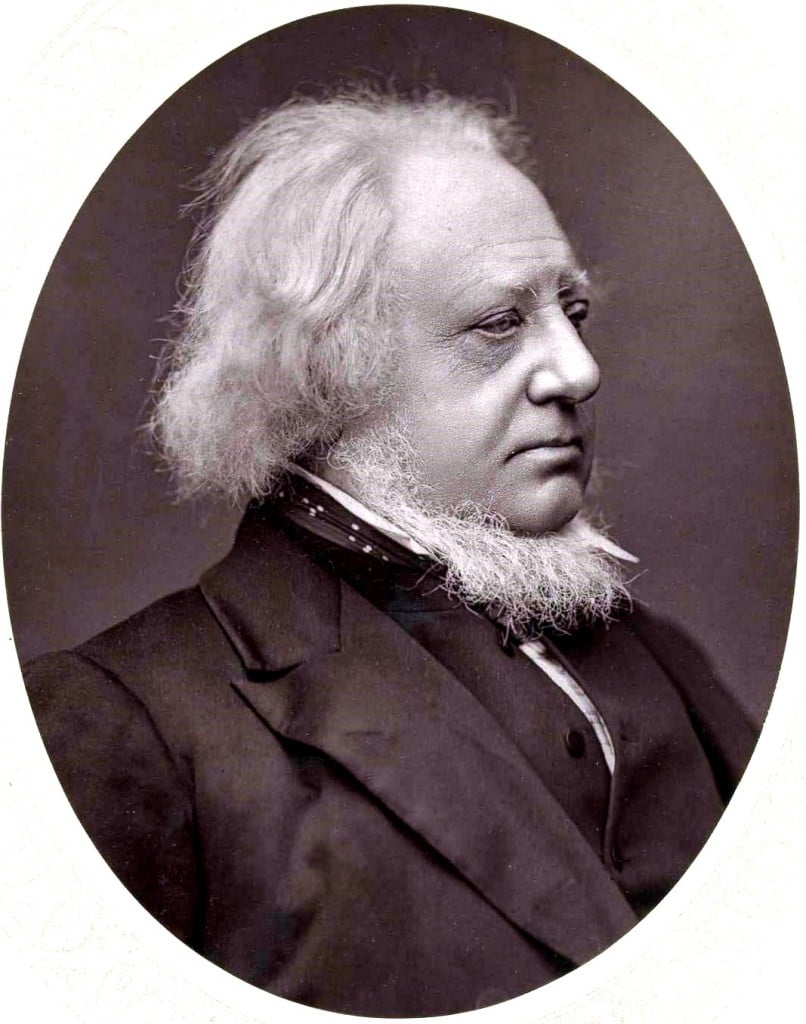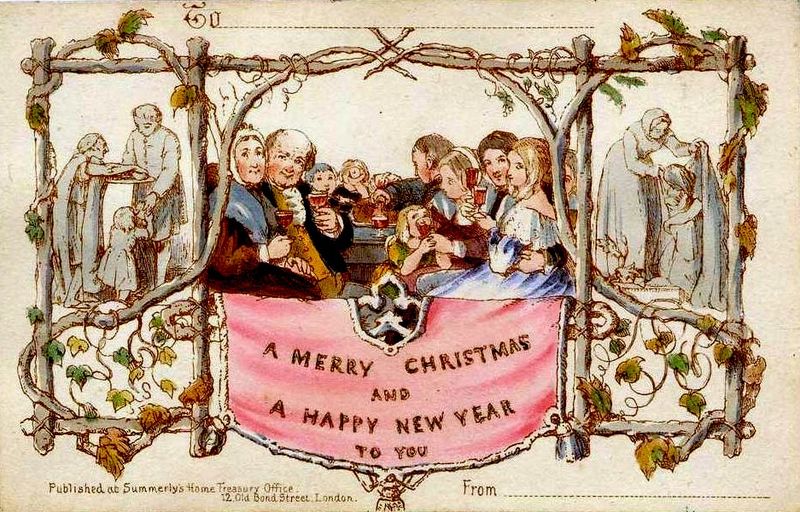‘Tis the season to be jolly. The season of mince pies, mulled wine and general overindulgence.
But, it is also the season for sending and receiving Christmas cards and so, in today’s blog, I thought I’d digress away from tales of murder and, instead, take a look at Christmas cards and, in particular, the first commercial Christmas Card.
THE YEAR OF A CHRISTMAS CAROL
1843 is a massively important year as far as Christmas goes. It was, for example, the year that Charles Dickens wrote and published the story that is, now, as much a part of Christmas as mince pies and turkey, A Christmas Carol.
It was also the year that Henry Cole (1808 – 1882) pioneered the first commercially produced Christmas cards.

THE PIONEERING MR COLE
Henry Cole was one of those people who could achieve just about anything he put his mind to.
He had been instrumental in the establishment of the “penny post” in 1840, having worked as assistant to its main instigator Rowland Hill.
In 1843 he saw that the postal service could offer a commercial opportunity to enable people to send Christmases messages cheaply and with less hassle then having to hand write dozens, if not hundreds, of letters, each one bearing a personalised Christmas message. Why not just mass produce one message that could be sent as a job lot? He thought.
JOHN CALLCOTT HORSLEY GETS TO WORK
To that end, he commissioned the artist John Callcott Horsley (1817 – 1903) to design a card that could contain the usual season’s greetings and also deliver the message of Christmas to his friends and colleagues.
This is what Horsely came up with.

Two batches, totalling 2050 cards, were produced for Christmas 1843.
One version was black and white, and retailed for sixpence, the other was a hand-coloured version that cost one shilling, quite a substantial amount in those days.
NOW WORTH A LOT OF MONEY
Mind you, in recent years, several of those first Victorian Christmas cards have been auctioned and have fetched impressive sums of money.
In 2001 a card, signed and sent by Henry Cole himself and sent to his grandmother and aunt, sold for a record £22,500 at auction in Devizes, Wiltshire.
And, in 2013, a black and white version sent to Miss Marinda Cundy, London, by a sender who simply signed it J.C.J , went for £4,200.
WHAT WAS ON THE CARD?
The card itself, as designed by John Callcott Horsely, consisted of three panels.
A central panel showed a wealthy family gathered around their Christmas feast raising their brim-full wine glasses to toast the health of the recipient.
Beneath them was the message “A MERRY CHRISTMAS AND A HAPPY NEW YEAR TO YOU.”
Two outer panels depicted scenes of charity, with food and clothing being given to the poor.
At the top of the card was the word “To”, followed by a space in which to insert the recipients name. At the foot of the card was the word “From”, after which the sender could write their name. A simple and effective method to perform a task that, up until then, had proved somewhat time consuming!
SOMEWHAT CONTROVERSIAL
However, those very first Christmas cards weren’t without controversy.
The fact that the family were drinking wine was, so the advocates of temperance argued, promoting drunkenness. Also, the image of children drinking – in particular the little girl in the green dress in the foreground – was considered by many to be totally outrageous.
So the card did attract a certain amount of criticism.
THE TRADITION OF SENDING CHRISTMAS CARDS
What it did do, however, was begin a tradition that gathered moment as the century progressed and which has continued to – if you’ll pardon the expression – snowball ever since.
Indeed, according to the Greeting Card Association, the total value of single cards sold in the UK in 2014 stood at £1.39 billion, with 878.8 million single cards being sold in this period.
And, to think, it all started because Henry Cole decided to save himself some time, and an awful lot of effort, at Christmas in 1843.
